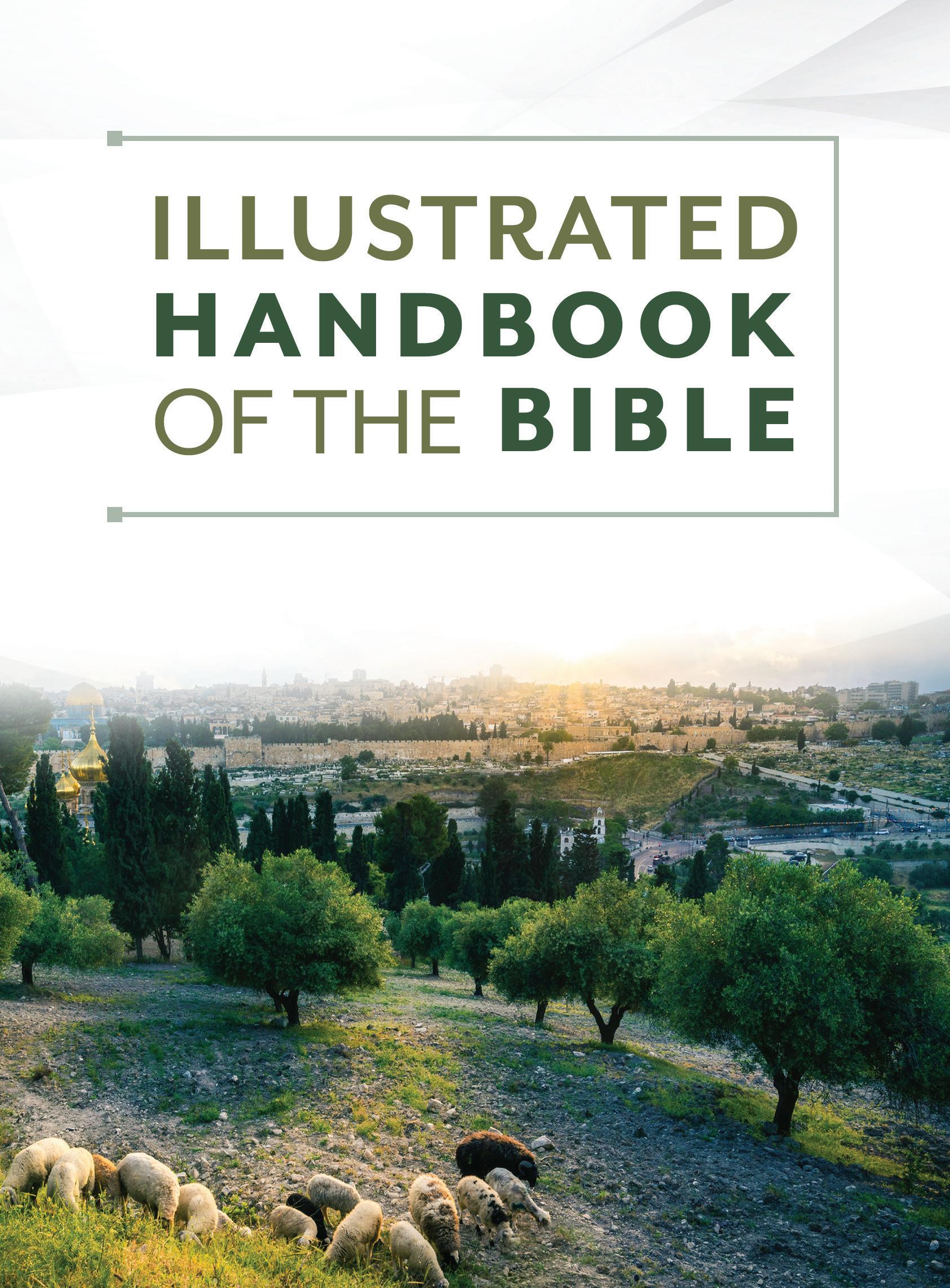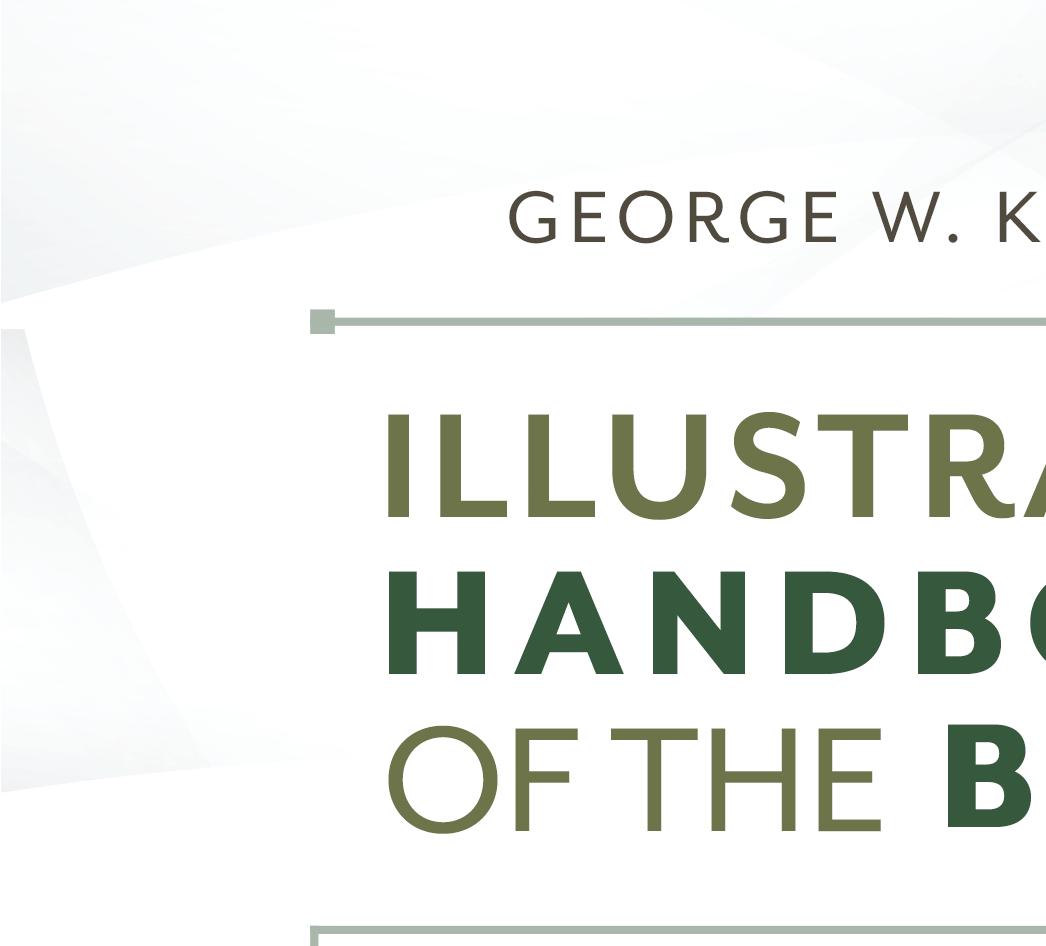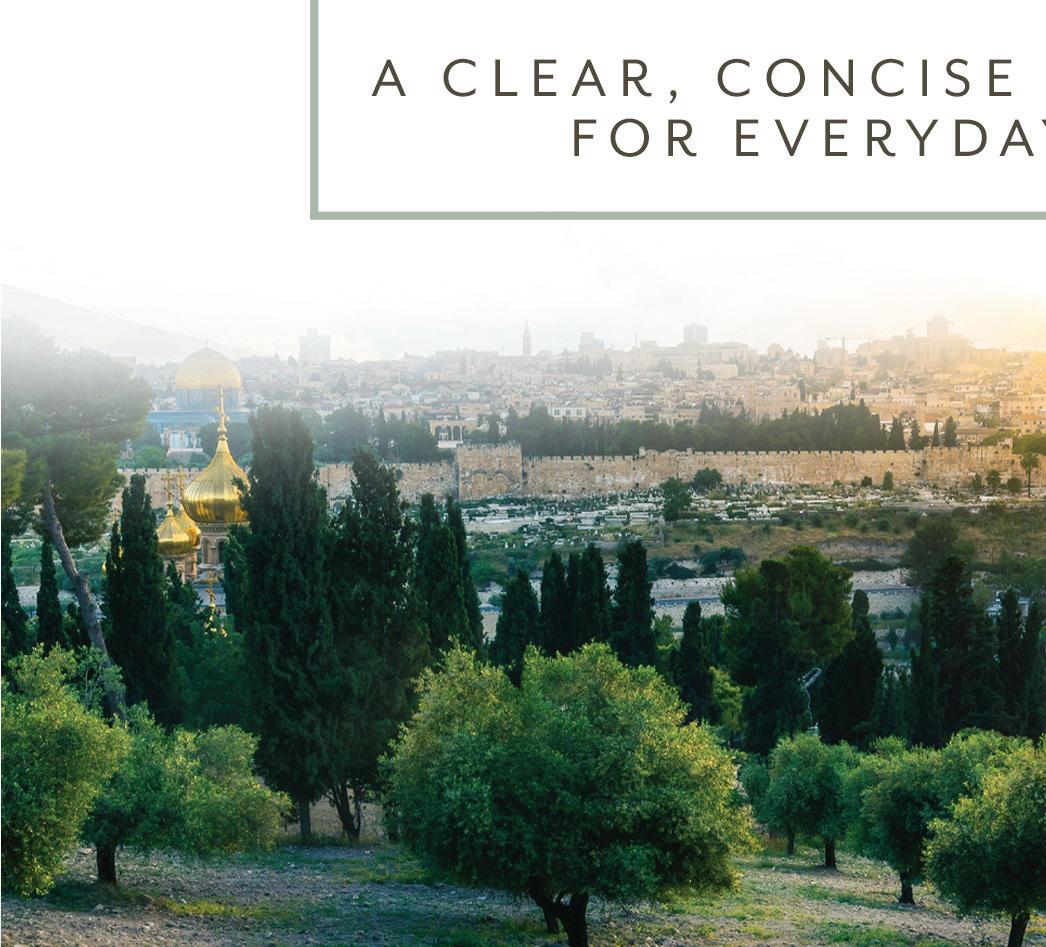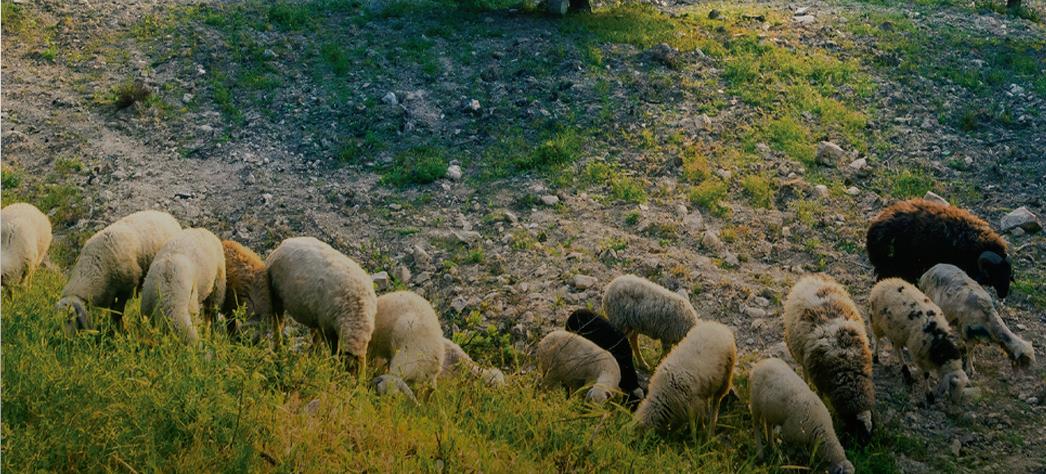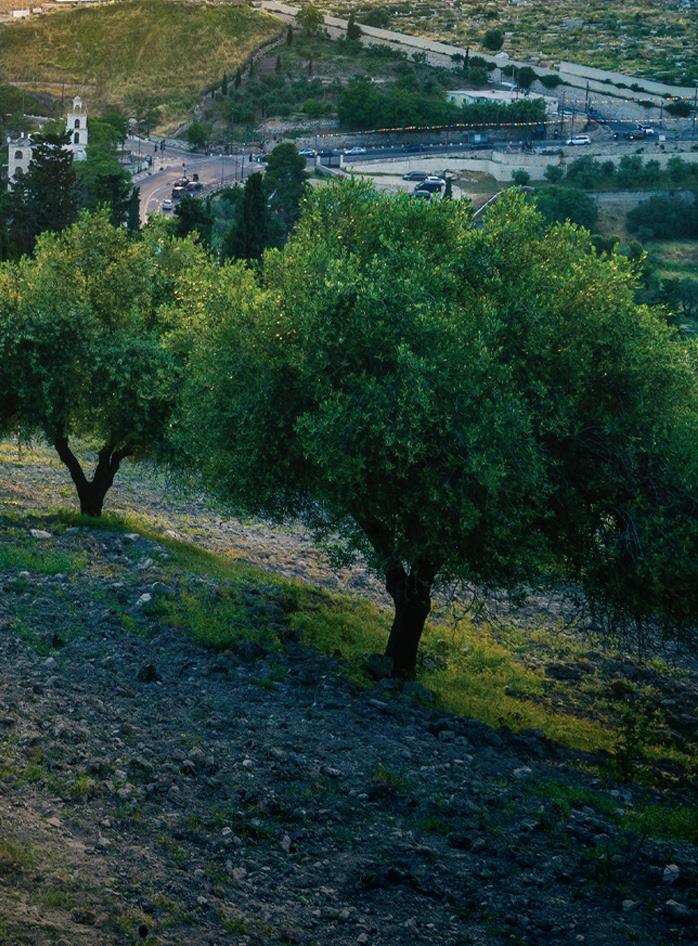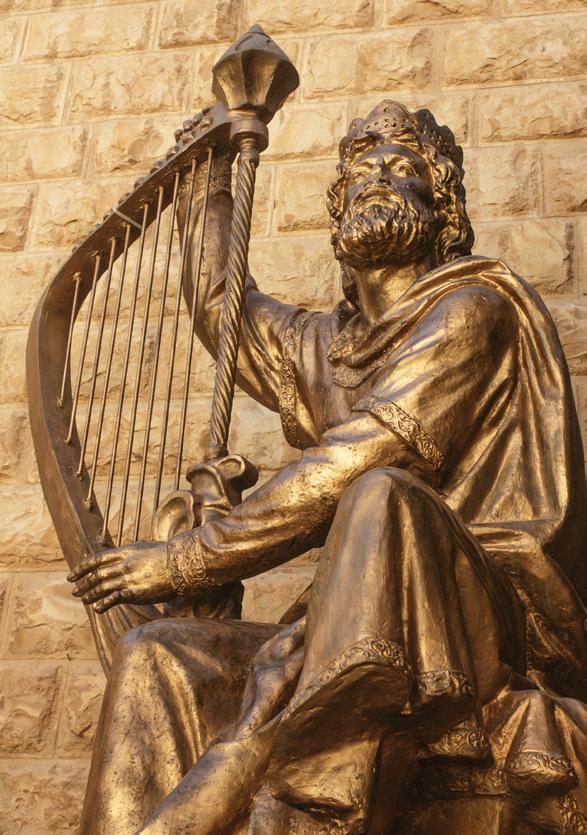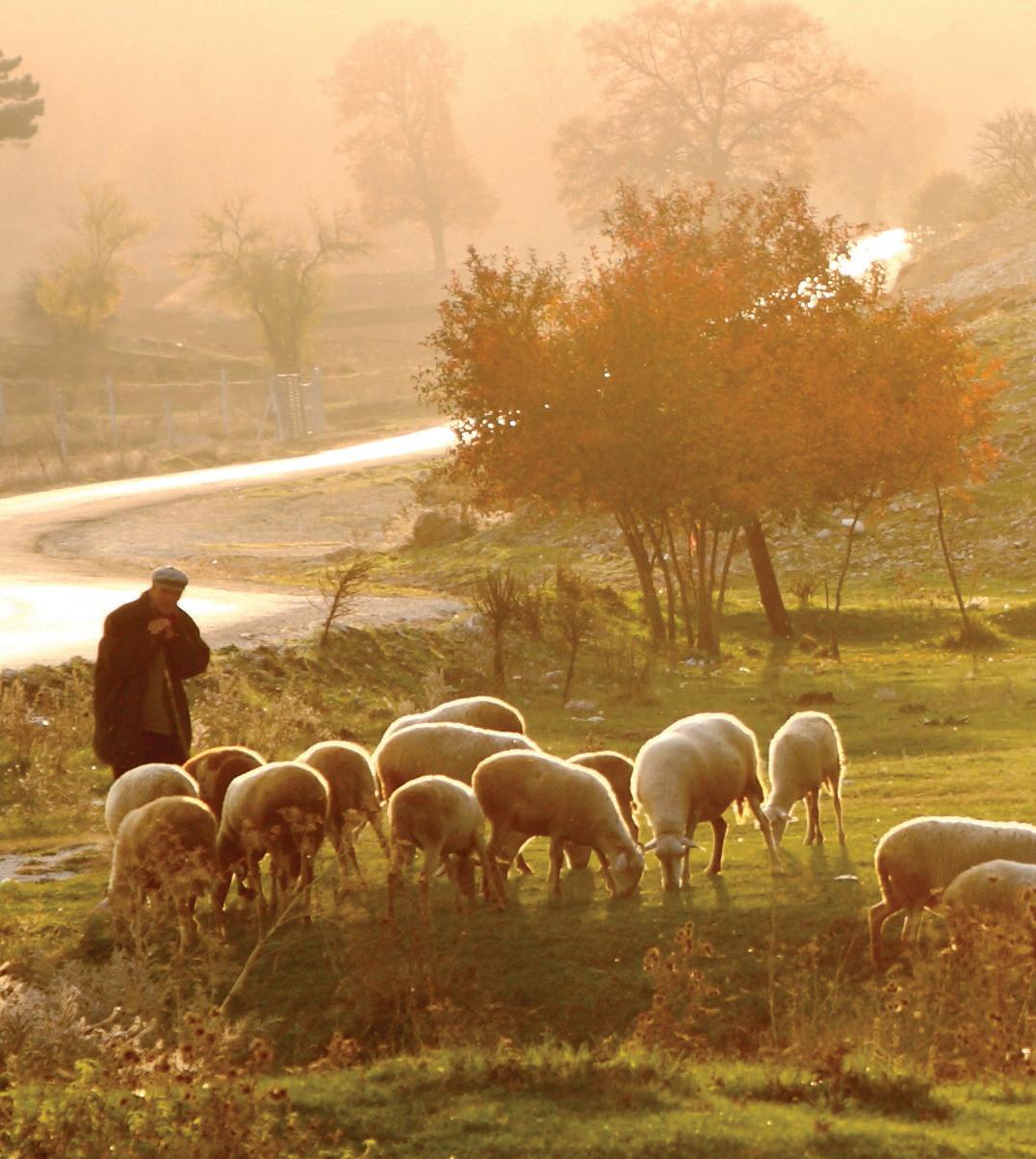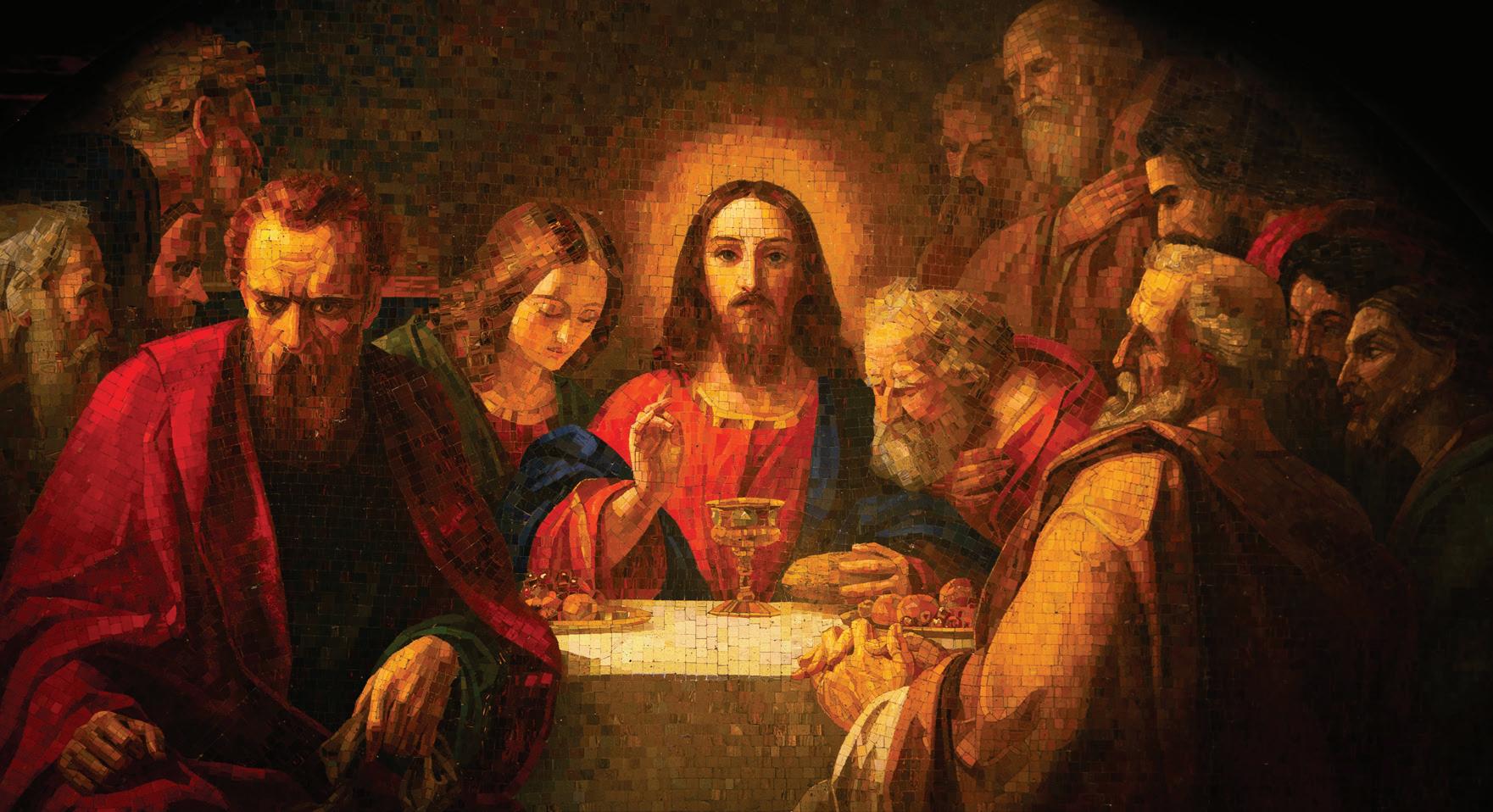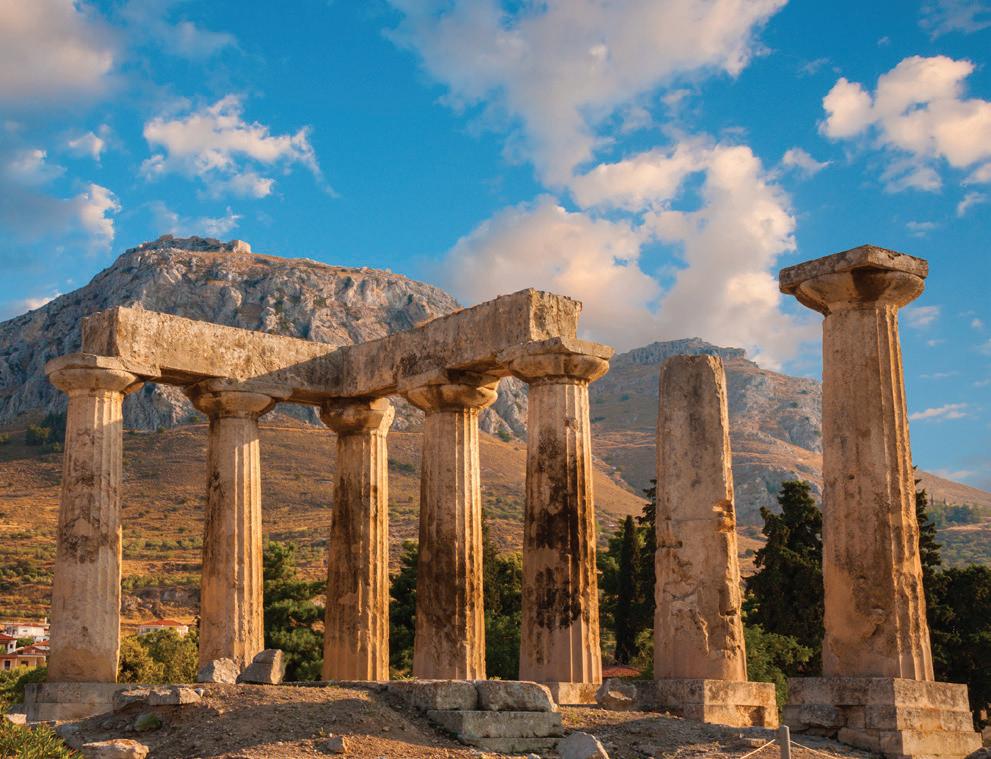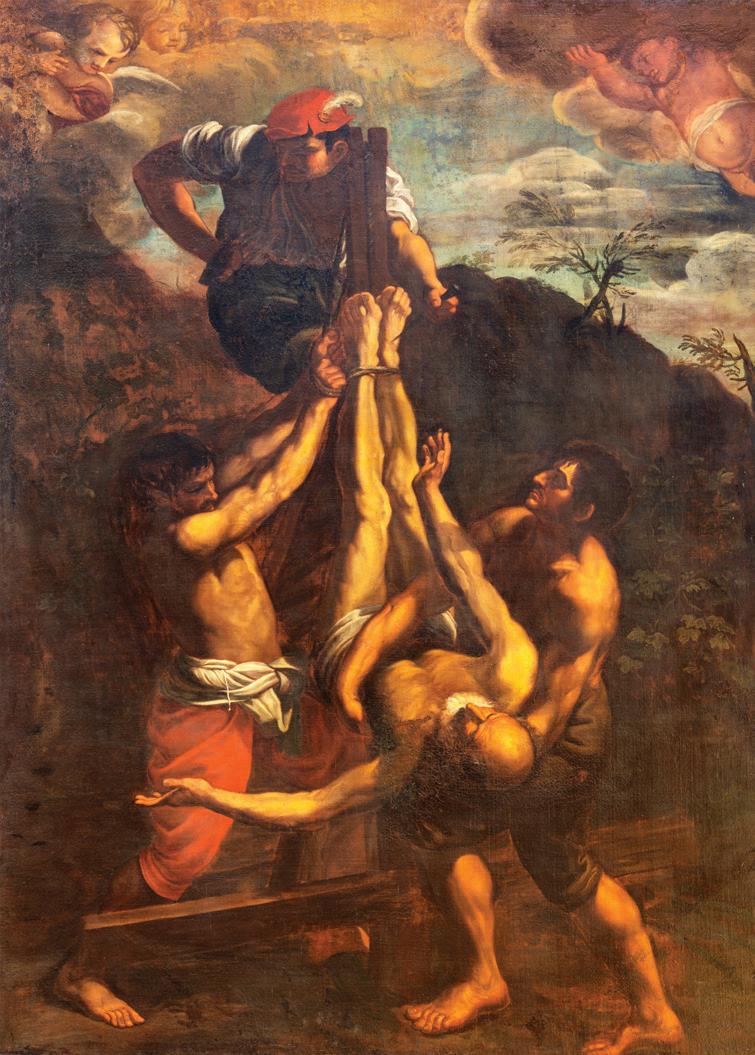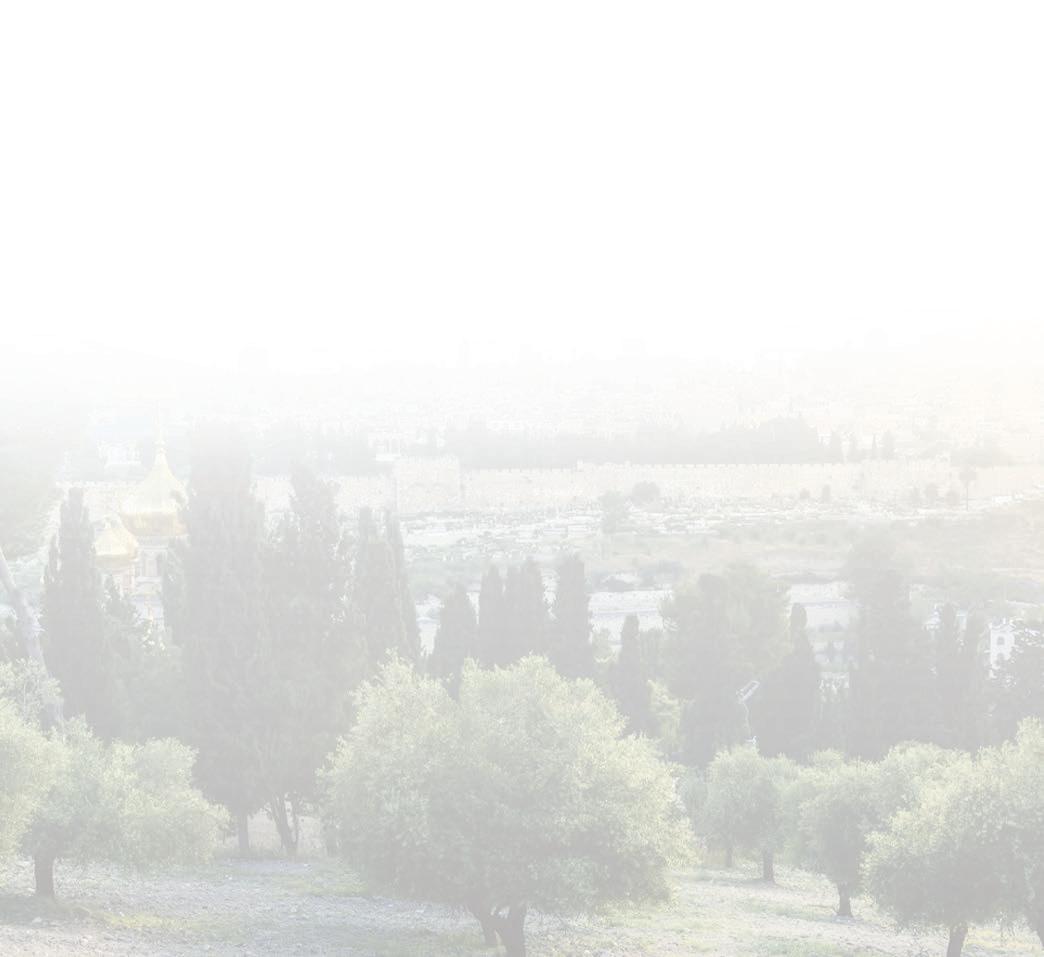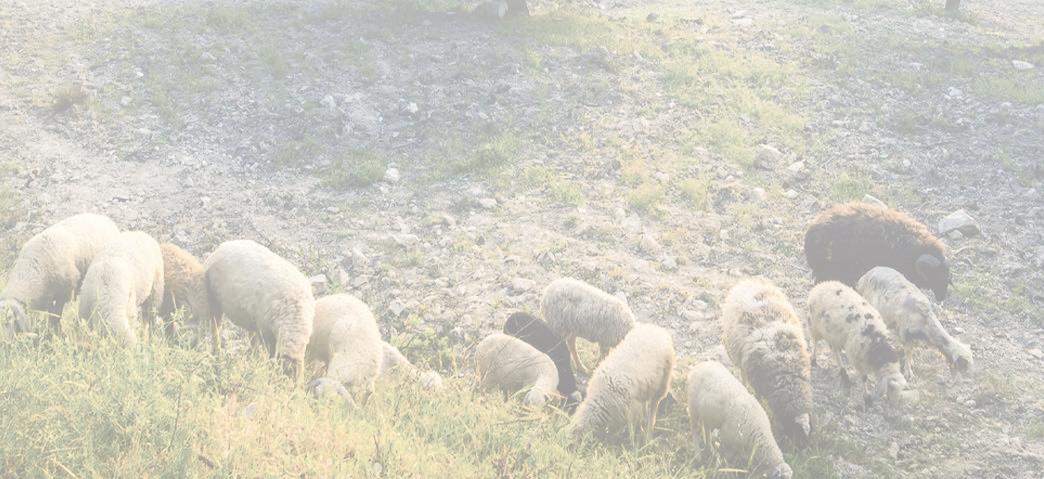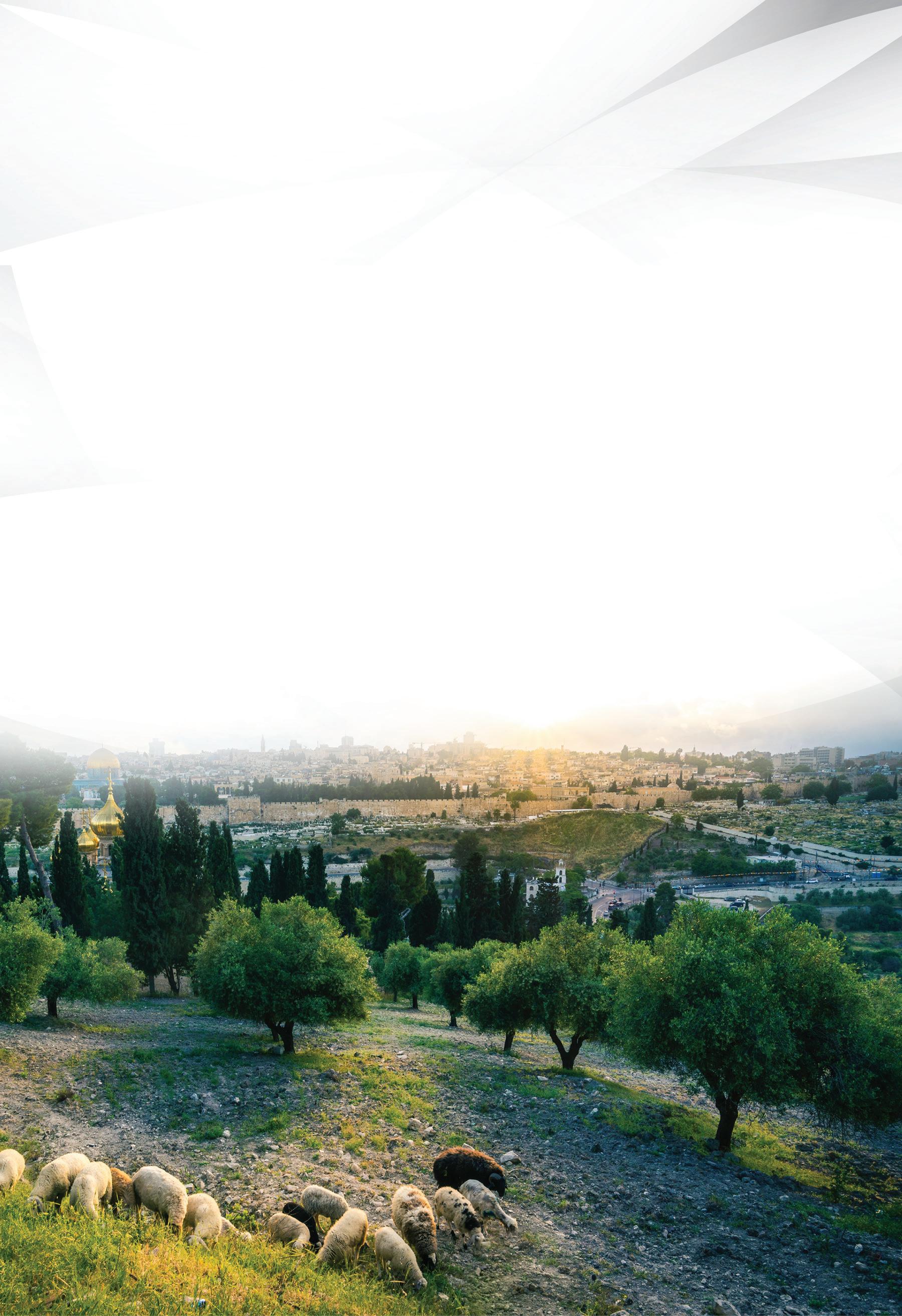GENESIS
OVERVIEW: Creation of humans, animals, and the physical universe and establishment of the covenant relationship between God and His people.
Introduction to Genesis
The word Genesis means “creation, origin, source, or the coming into being of something.” us, Genesis is the Bible’s book of beginnings. As the rst book in God’s Word, it recounts (1) the beginning of the physical world, (2) the beginning of God’s plan of sal-
vation for the human race, and (3) the beginning of the nation of Israel.
Creation. Genesis gives us a picture of a sovereign, all-powerful God who brought the physical world into being through the power of His spoken word. e words “and God said” appear as an introduction before each of the six days of creation.
e six days of creation also show that God brought the world into existence in an orderly fashion in accordance with His divine plan. e crowning achievement of His creation was man, whom He created in His image.







































As the all-powerful Creator, God had the right to set limits and boundaries beyond which man could not go. But man chose to disobey God in the Garden of Eden. is brought about the need for the second major theme of Genesis.







Sin and Salvation. Before his sin, man enjoyed unlimited fellowship with God. But this relationship was marred and broken when Adam and Eve ate the forbidden fruit. ey were banished from the garden and from God’s presence. 1:1–31. “In the beginning, God created the heaven and the earth.” God would quickly bathe the new world in light and ll the earth with every sort of living thing.













17






























But in an act of mercy, God killed an animal and made clothes from its hide to cover their nakedness (3:21). is symbolized His commitment to provide salvation for man, to restore the broken relationship between Himself and humankind.






















the forbidden fruit and are cast out of the Garden of Eden.



4:1–2. Two sons, Cain and Abel, are born to Adam and Eve.



roughout the Old Testament, the restoration of this relationship depended on man’s keeping the law and obeying God’s commandments. But in the New Testament, He sent Christ—His own Son—to do away with law keeping as the basis of salvation. rough His death on the cross, Christ paid the penalty for humankind’s sin.














4:3–15. Cain murders his brother Abel. God punishes Cain by driving him out of his homeland but protects him by placing a mark on him.








Nation of Israel. From the beginning, God was concerned for the salvation of all humanity. But He chose to channel this concern to the world through a people who would belong to Him in a special sense—the nation of Israel. God began to build this nation when He called Abraham to leave his pagan surroundings and to go to a new land “that I will shew thee” (12:1)—the land of Canaan. God made a covenant with Abraham in which He promised, “I will make of thee a great nation, and I will bless thee, and make thy name great; and thou shalt be a blessing” (12:2).
e book of Genesis shows how this covenant was renewed across several generations with the descendants of Abraham: Isaac, Jacob, and Jacob’s twelve sons, particularly Joseph. It was several hundred years before the tribal descendants of Jacob claimed the land of Canaan as their own, but the promise was planted and nourished in the book of Genesis.
Summary of Genesis
1:1–31. God creates the world in six days (Heb. 1:10).
2:1–25. God creates Adam and Eve, the rst man and woman.
3:1–24. Adam and Eve disobey God by eating




4:16–24. Cain’s descendants are listed.

[4:16–24] THE TERM FATHER. Jubal…was the father of all such as handle the harp and organ (Gen. 4:21).




In the ancient Middle East, the originator of any custom was frequently spoken of as the “father” of that custom. Thus, Jubal was called “the father of all such as handle the harp and organ” because he invented those instruments.




In Isaiah 9:6 the Messiah is called “the everlasting Father,” meaning He is the giver of eternal life. In 2 Corinthians 1:3, God is called “the Father of mercies,” and in Ephesians 1:17, “the Father of glory.”

4:25–5:32. Adam’s descendants are listed.
6:1–8. Wickedness spreads throughout the earth, and God determines to destroy the world. But Noah is looked upon with favor by the Lord because of his righteousness (see Exod. 33:12).
6:9–22. e Lord tells Noah to build a huge ark, or boat, in which he and his family will be safe from the catastrophe that He plans to send on the earth. Noah does exactly as God commands.
7:1–16. Noah and his family enter the ark, along with pairs of di erent animals. Rain pounds the earth for forty days and forty nights.
7:17–24. e earth is struck with a great ood, which lasts for 150 days. But Noah and his family and the animals are safe in the ark (2 Pet. 2:5).
18 Genesis 1:1–7:24


























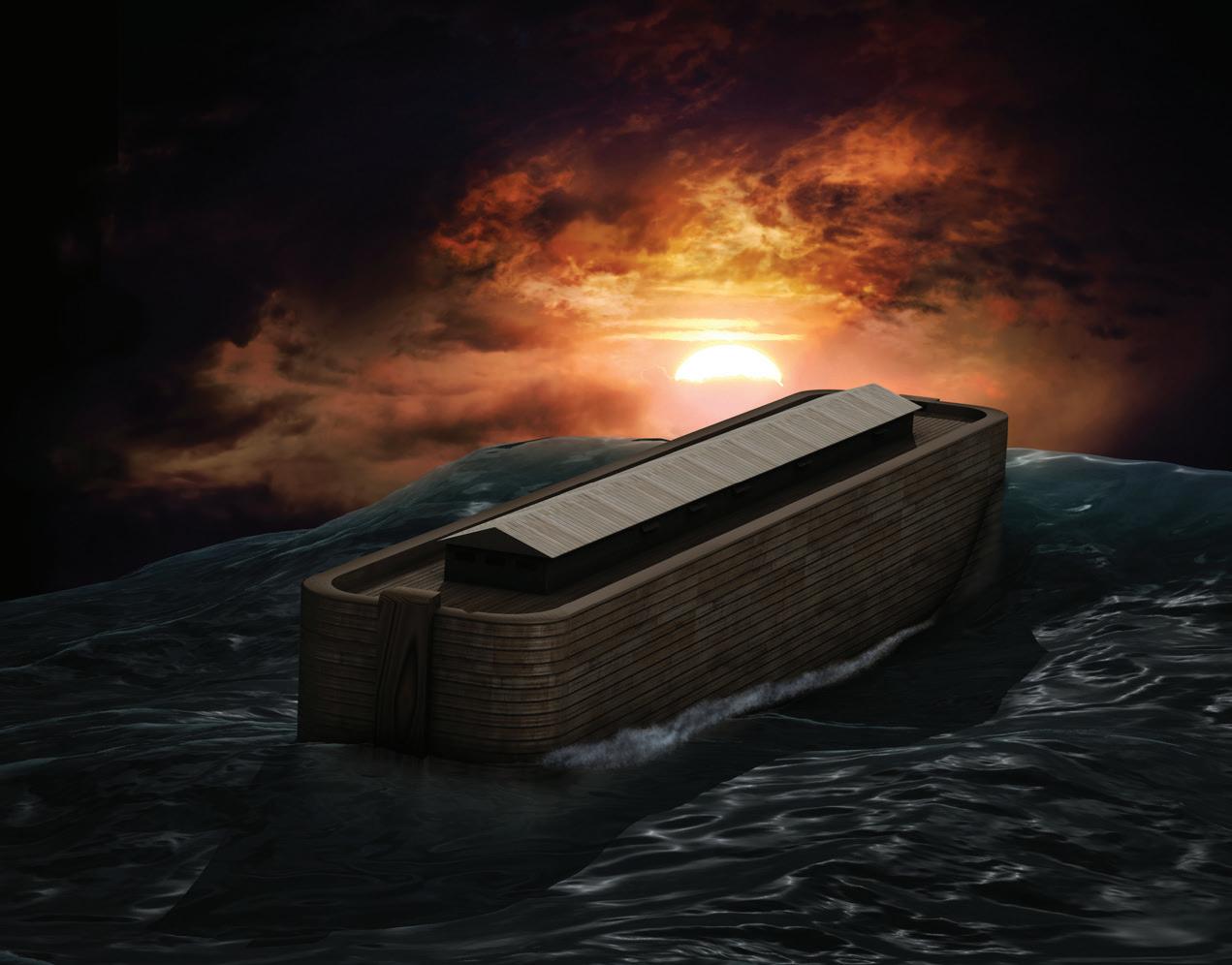



7:17–24. Noah’s ark was three stories tall with a single door. Eight human beings and countless animals rode out a ood that “prevailed upon the earth an hundred and fty days” (Genesis 7:24).
8:1–22. e oodwaters recede, and Noah and his family leave the ark. Noah builds an altar and o ers sacri ces to the Lord.
9:1–19. God makes a covenant with Noah and causes a rainbow to appear in the sky as a token of His promise.
9:20–27. Noah falls into a drunken stupor and pronounces a curse on Canaan, a descendant of Noah’s son Ham.
9:28–29. Noah dies after living for 950 years.
10:1–32. Noah’s descendants are listed.
11:1–9. God confuses human languages at the Tower of Babel because of man’s pride and arrogance.
11:10–32. Descendants of Noah’s son Shem— the ancestors of Abram/Abraham—are listed.
12:1–20. God calls Abram/Abraham to leave his homeland and settle in a new country, Canaan, where He will give him many descendants and make them into a great nation (Heb. 11:8).





13:1–18. Abram/Abraham and his nephew Lot go their separate ways after a disagreement over grazing lands for their livestock.












14:1–24. Abram/Abraham rescues Lot and pays tithes to Melchizedek, a priest and king.








15:1–21. God makes a covenant with Abram/Abraham and renews His promise to give him a land and many descendants (Gen. 12:1–2).









16:1–16. Abram/Abraham fathers a son, Ishmael, by the Egyptian servant of his wife, Sarah.
17:1–27. God renews His covenant with Abram, renames him Abraham, and promises that Sarah will bear a son. All males in Abraham’s household are circumcised as a sign and seal of the divine covenant.
18:1–33. Abraham pleads with God to spare the wicked cities of Sodom and Gomorrah. 19:1–29. Lot escapes when Sodom and Gomorrah are destroyed by the Lord (2 Pet. 2:6).
[11:1–9] BABYLONION BRICKS. They [builders of the tower of Babel] said…, Let us make brick, and burn them throughly. And they had brick for stone, and slime [tar, NIV] had they for mortar (Gen. 11:3).

Many of the bricks used in Babylonia, where the Tower of Babel was built, were sun-dried, but others were cured by burning, just like those used in this tower. Fire-cured bricks were stronger, so they were sometimes laid next to a wall of sun-dried brick to give it strength and stability.
19 Genesis 8:1–19:29





























[15:1–21] A STARTLING SIGN. And it came to pass, that, when the sun went down, and it was dark, behold a smoking furnace, and a burning lamp that passed between those pieces (Gen. 15:17).










A few hours before this event, the Lord had made a covenant with Abraham. He promised to bless Abraham with many descendants and make them into a nation devoted to Him.










To seal the covenant, Abraham cut several animals into two pieces and walked between the two sections. This was a solemn declaration of his intention to keep the covenant. Just as the two separate pieces belonged to one animal, so the two people making this agreement were of one mind about the terms of the covenant.











When darkness fell, God caused a burning lamp, signifying His divine presence, to pass between the two sections of the slaughtered animals. This was a bold and startling sign to Abraham that God would keep His promise.





19:30–38. Lot fathers two sons, who become the ancestors of the Moabites and the Ammonites.











Abraham’s descendants into a great nation (Gen. 12:1–2).



22:20–24. Abraham’s relatives are listed.








20:1–18. Abraham tries to pass o Sarah as his sister in the territory of Abimelech, a Philistine king.

21:1–21. A son, Isaac, is born to Abraham and Sarah; Hagar and Ishmael are banished to the wilderness.

21:22–34. Abraham and Abimelech reach an agreement about a well at Beersheba.
22:1–14. God tests Abraham’s faithfulness, but Abraham is prevented from sacri cing his son Isaac.
22:15–19. God renews His promise to make
[19:1–29] SITTING AT THE CITY GATE. And there came two angels to Sodom at even; and Lot sat in the gate of Sodom (Gen. 19:1).
Cities of the ancient world were surrounded by massive defensive walls made of stone. People gathered at the gateway through the city wall to conduct business, pass the time with friends, catch up on the latest news, or just to watch the passing crowds.
Lot happened to be sitting in the gateway of the city of Sodom, just as evening was falling, when these two angels entered the city.
The Bible refers several times to the city gate as a gathering place (Gen. 23:10; 1 Sam. 4:18; Ps. 127:5; Prov. 1:21).




23:1–20. Abraham’s wife, Sarah, dies; Abraham buys a cave at Machpelah as a burial site.

[23:1–20] MONEY BY WEIGHT. Abraham weighed to Ephron the silver…four hundred shekels of silver, current money with the merchant (Gen. 23:16).
Abraham paid Ephron the Hittite four hundred shekels of silver for a plot of ground as a burial site for his family.
Coins and paper money did not exist in Bible times, so Abraham paid Ephron in silver bullion. This bullion weighed four hundred shekels—the agreed-upon price. Money had to be weighed rather than counted by bills and coins, as we do today.
The exact weight of a shekel is not known. The word shekel (from the Hebrew shukal, “to weigh”) indicated this method of figuring money by weight rather than by number or coins or bills.
The weighing of money is also referred to in Jeremiah 32:9–10 and Zechariah 11:12.
24:1–67. Abraham’s son Isaac is married to Rebekah.
25:1–11. Abraham dies and is buried.
25:12–18. Descendants of Ishmael, Abraham’s son by Hagar, are listed.
25:19–26. Twin sons, Jacob and Esau, are born to Isaac and Rebekah.
20 Genesis 19:30–25:26










[26:1–35] CONTROVERSY OVER WELLS. All the wells which his [Isaac’s] father’s servants had digged in the days of Abraham his father, the Philistines had stopped them, and filled them with earth (Gen. 26:15).






Springs and streams are scarce in the hot, dry climate of the ancient Middle East. Shepherds had to dig wells to provide water for their flocks and herds.






The wells that Abraham had dug for his animals years before in the unoccupied territory of southern Canaan had given him and his heirs the right to graze their flocks in this region. But after Abraham died, the Philistines had filled these wells with dirt, denying Isaac the right as Abraham’s heir to continue using these pasturelands.








Isaac and the Philistines eventually reached a compromise that allowed him access to the grazing lands around a productive well that he named Sheba (“productive well”). The ancient city of Beersheba (“well of Sheba”) took its name from this well (Gen. 26:17–23).




25:27–34. Esau, the older brother, trades his birthright to Jacob for a bowl of stew (1 Chron. 5:1–2).
26:1–35. Isaac digs several wells in the territory of the Philistines; God promises Isaac that the covenant He has made with His father, Abraham, will be continued through him and his descendants.
27:1–46. Jacob tricks his father into blessing him rather than his older son, Esau.
28:1–22. Jacob travels to Haran in search of a













wife; God assures him in a dream that His promise to Abraham will be realized through Jacob’s descendants (Gen. 15:1–21).





29:1–30. In Haran, Jacob works seven years for the hand of Leah and seven years for Rachel, daughters of Laban.






29:31–30:24. Jacob fathers many sons by several di erent wives.






30:25–43. Jacob prospers while raising livestock in the household of his father-in-law, Laban.


















31:1–32:23. With Laban’s blessing, Jacob returns to Canaan with his family, along with presents for his estranged brother, Esau (Gen. 27:41).






32:24–32. Jacob wrestles with an angel; he is renamed Israel and assured of God’s blessings.



33:1–20. Jacob is greeted and forgiven by his brother, Esau (Gen. 27:41).
34:1–31. Jacob and his sons avenge the sexual assault of Jacob’s daughter Dinah by Shechem.
35:1–15. God renews His covenant with Jacob at Bethel and assures him that his descendants will receive the land promised to Abraham (Gen. 15:1–21).
35:16–20. Rachel dies while giving birth to Jacob’s twelfth son, Benjamin.
35:21–26. e twelve sons of Jacob by four different wives are listed.
35:27–29. Jacob’s father, Isaac, dies.
[29:1–30] MARRIAGE AMONG RELATIVES. It is better that I [Laban] give her [Rachel] to thee [Jacob], than that I should give her to another man (Gen. 29:19).
Laban was the brother of Jacob’s mother, Rebekah (Gen. 29:10). This relationship would have made Laban’s daughter Rachel—the woman whom Jacob wanted to marry—Jacob’s first cousin.
Sometimes the term brother was used loosely in Bible times to refer to any male relative such as a nephew or an uncle. So Rachel may have been a distant relative of Jacob.
Marriage among distant relatives from the same tribe or bloodline was common in Old Testament times. Abraham sought a wife for his son Isaac from among his kinsmen in Mesopotamia (Gen. 24:2–4).



21 Genesis 25:27–35:29


















[33:1–20 ] GIFTS FOR AN ENEMY. Jacob said, Nay, I pray thee [Esau], if now I have found grace in thy sight, then receive my present at my hand (Gen. 33:10).

















In Bible times people presented gifts to others for many reasons: to secure a bride through a dowry, or bride price; to seal a friendship, or to show love. In this instance Jacob presented gifts to his estranged brother, Esau, because he had wronged him in the past. He hoped his gifts would appease Esau’s anger.










full brother and youngest son of Jacob (Gen. 35:16–20), does not make the trip. e ten brothers appear before Joseph, now one of Egypt’s high o cials.







42:7–17. Joseph recognizes his brothers, but they do not recognize him. He has them imprisoned for several days after accusing them of being spies.
















The giving of gifts is mentioned many times in the Bible (Judg. 3:18; 1 Sam. 10:27; Ps. 72:10; Prov. 18:16; Matt. 2:11).





42:18–38. Joseph holds his brother Simeon as a hostage. He sends the others back to Jacob with the charge to bring their youngest brother, Benjamin, to him in Egypt. is will prove that they are not spies and result in the release of their brother Simeon.











37:1–36. Jacob’s son Joseph is sold into slavery by his brothers and taken into Egypt.



36:1–43. Descendants of Esau, Jacob’s brother, are listed.

38:1–30. Judah, a son of Jacob, fathers twin sons by his daughterin-law Tamar.
39:1–23. Joseph is imprisoned in Egypt on a false charge.
40:1–23. Imprisoned with the pharaoh’s chief butler and baker, Joseph explains the meaning of their dreams and develops a reputation as an interpreter of dreams.
41:1–43. Joseph is appointed a high o cial in the Egyptian pharaoh’s administration after foretelling a severe famine by interpreting the pharaoh’s dream.
41:44–52. Joseph fathers two sons, Manasseh and Ephraim, through his Egyptian wife, Asenath.
41:53–57. e famine that Joseph has foretold strikes Egypt.
42:1–6. Because of the famine, ten of Joseph’s brothers come to Egypt to buy grain. Benjamin, Joseph’s

43:1–34. Joseph’s brothers, including Benjamin, return to Egypt to buy grain. Joseph





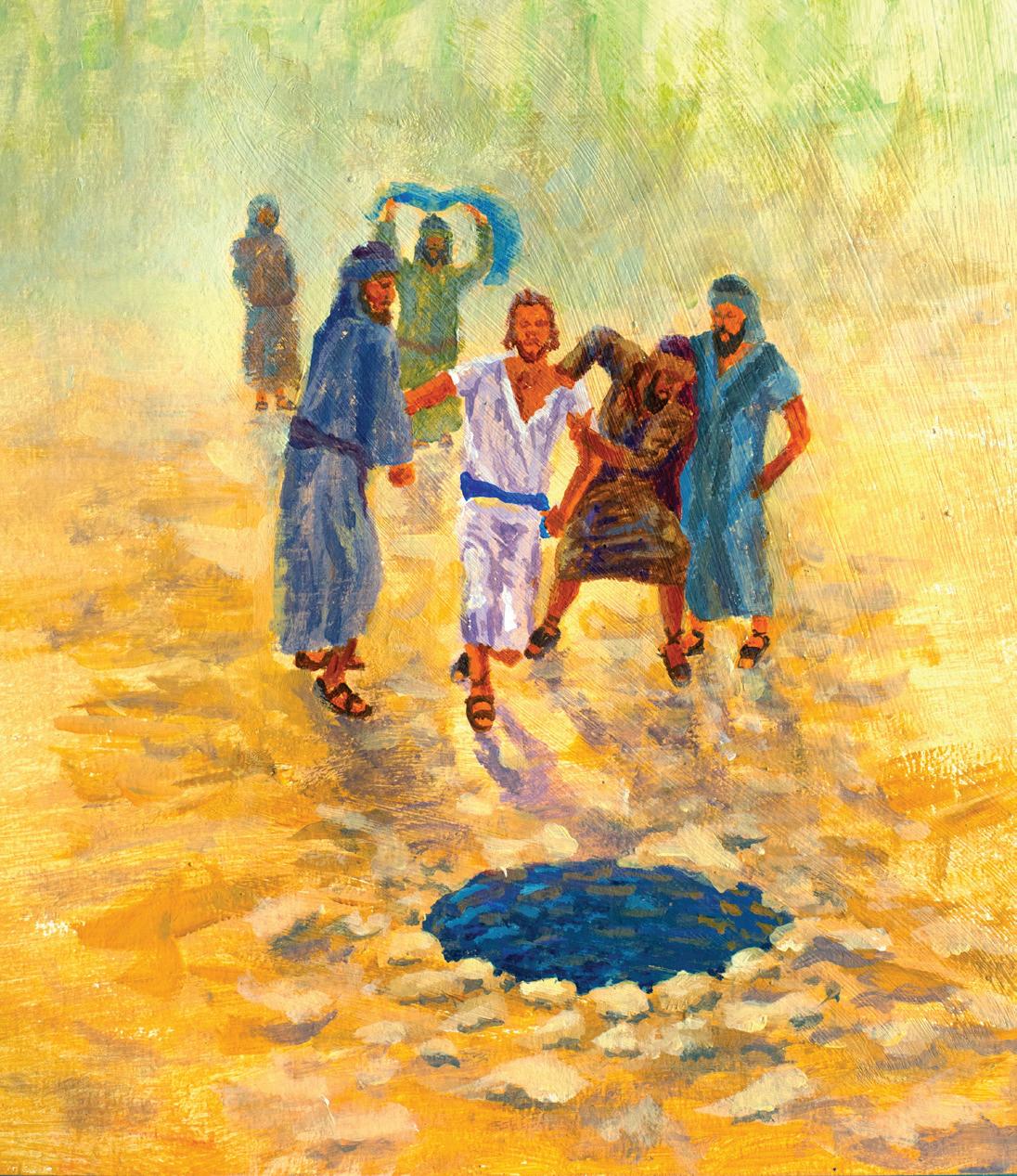
37:1–36. Young Joseph is forced into a well by his jealous older brothers. ey hated him as the favorite of their father, Jacob, and for sharing his dreams that they would bow before him. In time, his dream would prove true.
22 Genesis 36:1-43:34















[37:1–36] JOSEPH’S UNUSUAL COAT. Israel [Jacob] loved Joseph more than all his children, because he was the son of his old age: and he made him a coat of many colours (Gen. 37:3).












Joseph’s “coat of many colours” has been translated in various ways by modern translations (“richly ornamented robe,” NIV; “long robe with sleeves,” RSV). The precise meaning of the Hebrew word behind this phrase is uncertain. This “coat” may have been the long outer robe that was worn by both men and women in Bible times. It was different than the robes worn by Joseph’s brothers, thus setting him apart as his father’s favorite son.



















become a slave of Joseph if he will let Benjamin return to his father.














45:1–28. Overcome with emotion, Joseph nally reveals himself to his brothers. He sends them back to their homeland to tell Jacob that his son Joseph is alive and doing well in Egypt.

46:1–47:31. With the help of Joseph, Jacob and his sons and their families move to Egypt to escape the famine (Acts 7:14–15).








48:1–22. Jacob blesses the two sons of Joseph— Ephraim and Manasseh.





releases Simeon and invites all of them to a feast at his house. Again, they do not recognize Joseph.

44:1–13. Joseph sends all his brothers back to Jacob with their sacks of grain. But he plants one of his silver cups in Benjamin’s sack. en he sends his soldiers after them to search for stolen merchandise. All the brothers are arrested and returned to Joseph after the soldiers nd the silver cup.

[43:1–34] SUPER-FRESH MEAT. Joseph…said to the ruler of his house, Bring these men [Joseph’s brothers] home, and slay, and make ready; for these men shall dine with me at noon (Gen. 43:16).
The meat that Joseph served his brothers came from a freshly slaughtered animal. In Old Testament times, there was no way to preserve meat. An animal was slaughtered immediately before the meal at which meat was to be served (Gen. 18:7–8; 1 Sam. 28:24).
44:14–34. Judah pleads with Joseph on behalf of his brother Benjamin. He o ers to













49:1–33. After predicting the future for each of his sons, Jacob dies in Egypt.




[49:1–33] A HAND OF VICTORY. Judah, thou art he whom thy brethren shall praise: thy hand shall be in the neck of thine enemies (Gen. 49:8).

Before he died Jacob called his twelve sons together and predicted their future. He foretold the importance of Judah and his descendants—the tribe of Judah—by using the image of Judah’s hand on the neck of his enemies. To place one’s hand on the neck of another was a symbol of superiority and victory in battle (2 Sam. 22:41; Lam. 5:5).
Judah did become the central tribe in Israel’s history. King David was born into this tribe, and it was through David’s lineage that the Messiah emerged (Matt. 1:1–17; Judah is spelled Judas in the KJV; see Matt. 1:2).
50:1–13. Joseph and his brothers return Jacob’s body to Canaan for burial (Acts 7:16).
50:14–21. Joseph assures his brothers of his unconditional forgiveness.
50:22–26. Joseph dies in Egypt.
23 Genesis 44:1–50:26
EXODUS
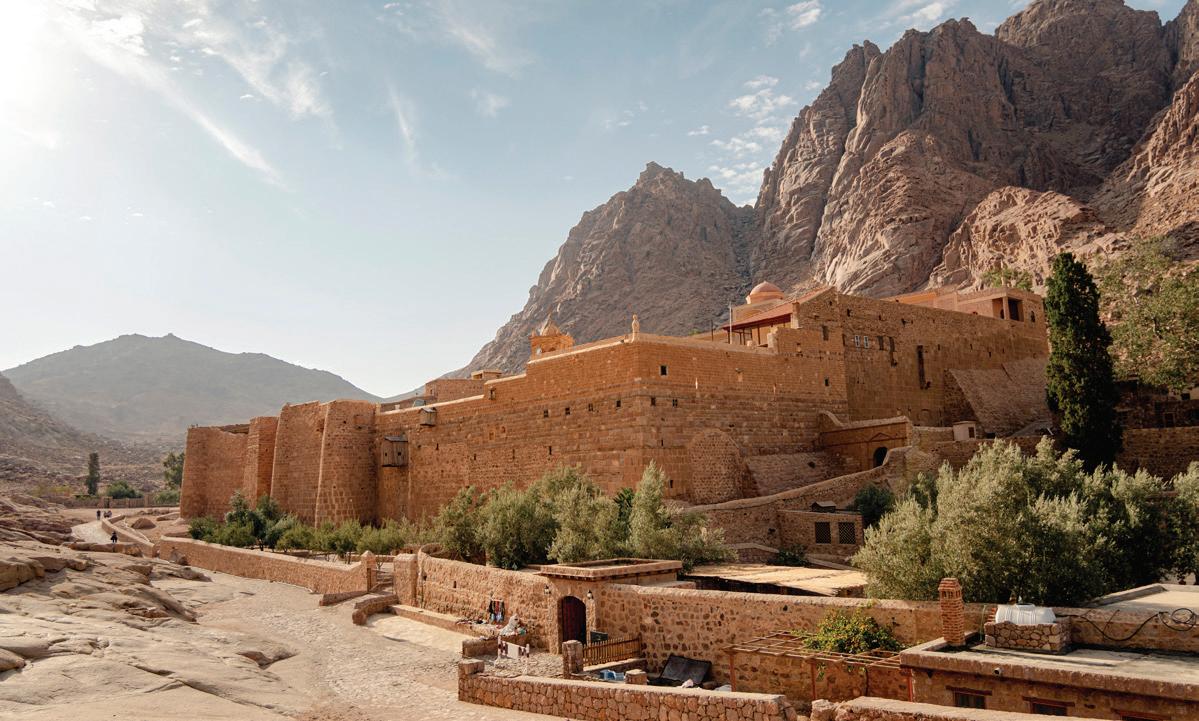
3:1–22. At the base of Mount Sinai, a monastery marks the spot where an ancient tradition says God talked to Moses from a burning bush, sending him to free the Israelites. Tradition also says that this mountain is where God later gave Moses the Ten Commandments.












OVERVIEW: e Lord delivers His people from enslavement by the Egyptians.




knew not Joseph” (Exod. 1:8). Jacob’s descendants were reduced to the status of slaves and forced to work on various Egyptian building projects.
But God did not forget His people. He called Moses to lead His people out of Egypt. With his brother, Aaron, as his helper, Moses confronted the pharaoh of Egypt and insisted that he let the Hebrew people go. God worked many miracles on behalf of His people to win their freedom.











Introduction to Exodus








The book of Exodus begins where the book of Genesis ends—with the descendants of Jacob who settled in Egypt to escape a severe famine in their territory (Gen. 46:1–47:31). is move to Egypt was possible because of the favored status of Joseph—one of Jacob’s sons— who rose to a high position in the Egyptian government. For many years the Hebrew people multiplied and prospered with the blessings of the Egyptian pharaoh.

e book of Exodus also tells how God took care of His people while they wandered in the wilderness area around Mount Sinai. rough Moses, God also delivered the Ten Commandments and other laws to guide their lives as His special people.










At God’s command through Moses, the people also built a tabernacle in the wilderness. is sacred tent, a central place for sacri ce and worship, traveled with the Hebrew people when they moved from place to place in the wilderness. It symbolized God’s presence in the midst of His people.















But then the political climate changed: “ ere arose up a new king over Egypt, which










e dominant personality of the book of Exodus is Moses. God often spoke directly to him and gave him a message to pass on to the people. Moses was responsible for leading the

24















people in their quest for the Promised Land— the territory of the Canaanites that God had promised to Abraham and his descendants many centuries before (Gen. 12:1–5).








Moses continues his leadership of the Hebrew people up through the book of Deuteronomy. Many scholars believe he wrote these four Old Testament books, as well as the book of Genesis. His important role in God’s plan for His people makes him one of the central gures of biblical history.





















Summary of Exodus

1:1–7. e descendants of Jacob/Israel multiply at an astonishing rate in Egypt. 1:8–14. e pharaoh of Egypt enslaves the Israelites.






1:15–22. e pharaoh orders all male Israelite infants killed to control their population growth.

2:1–4. A baby boy named Moses is hidden in a basket on the Nile River to escape the pharaoh’s decree (Heb. 11:23).
[2:1–4] MOSES’ PAPER ARK. She [Moses’ mother] took for him an ark of bulrushes [papyrus basket, NIV], and daubed it with slime [tar, NIV] and with pitch and put the child therein (Exod. 2:3).
Moses was hidden by his mother to protect him from the death order issued by Pharaoh against all male children of the Israelites (Exod. 1:15–16).
The “ark” in which he was hidden was probably a basket woven from leaves of the papyrus plant. This reedlike plant grew in abundance along the banks of the Nile River. The Egyptians used papyrus for making paper, as well as shoes and clothes.




1:8–14. Bricks of mud and straw from Morocco. As a race of slave laborers, the Israelites made similar bricks some 3,000 years ago, building cities for Egypt’s pharaoh.
kills an Egyptian o cial who is abusing an Israelite slave. Moses ees to Midian to escape the pharaoh’s wrath.
2:16–25. Moses becomes a shepherd in the household of a Midianite named Reuel (also known as Jethro) and marries his daughter Zipporah.
3:1–22. God appears to Moses in a burning bush and calls him to deliver His people, the Israelites, from enslavement by the Egyptians (Acts 7:30).
4:1–13. God assures Moses through miraculous signs that He will stand with him before the pharaoh.
2:5–10. e pharaoh’s daughter discovers Moses and adopts him as her son.
2:11–15. After he reaches adulthood, Moses
4:14–31. God deals with Moses’ excuses by appointing his brother, Aaron, to serve as Moses’ spokesman. Moses returns to Egypt to confront the pharaoh.
25 Exodus 1:1–4:31
